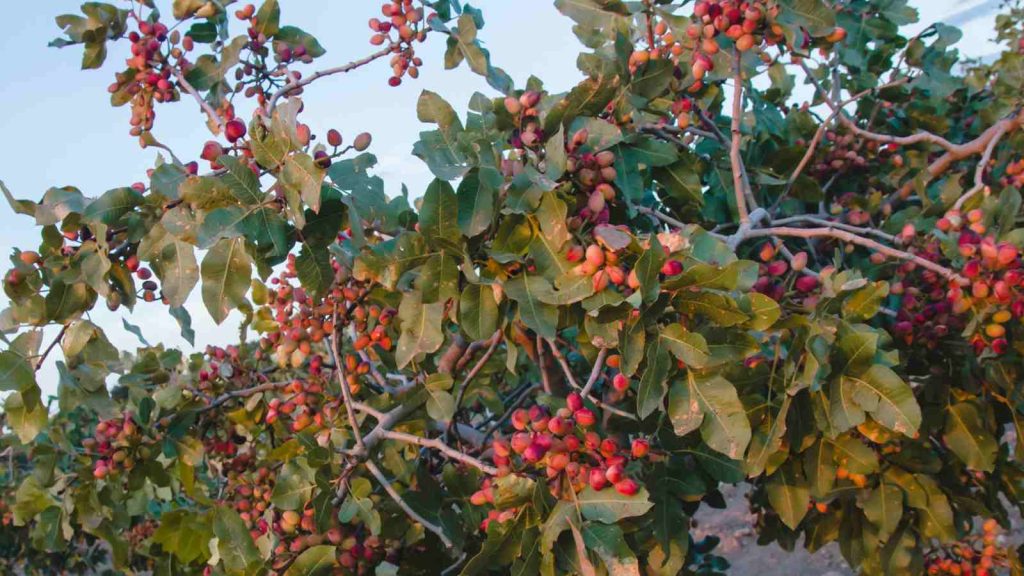Exploring the Rich Biodiversity of Pistachios: A World of Varieties and Plant Diversity
Pistachios are a delicious and nutritious snack and a symbol of rich biodiversity in the plant kingdom. The cultivation of Iranian pistachios spans thousands of years, with origins tracing back to regions of Central Asia and the Middle East. Over time, various species and cultivars of pistachio plants have evolved, resulting in a remarkable array of biodiversity within this crop. This article will delve into the fascinating world of pistachio biodiversity, exploring the different kinds of plants, their ecological significance, and the importance of preserving this diversity for future generations.
The Origin and Evolution of Pistachio Biodiversity
The pistachio tree, scientifically known as Pistacia vera, is the most commonly cultivated species, but it is just one part of the broader Pistacia genus. This genus includes a variety of species, each with its own unique characteristics and ecological roles. The genetic diversity within the Pistacia genus has allowed pistachios to adapt to a wide range of environmental conditions, from the arid deserts of Iran to the Mediterranean climates of Turkey, Greece, and Italy.

Varieties of Pistachio Plants
1. Pistacia Vera (Common Pistachio)
Pistacia vera is the species most people are familiar with, as it produces the edible nuts commonly found in stores. Within this species, there are numerous cultivars, each offering distinct flavors, sizes, and shell characteristics. Some popular cultivars include:
– Kerman: Known for its large size and rich flavor, Kerman is one of the most widely grown pistachio varieties.
– Fandoghi: Smaller in size, this variety is favored for its high yield and intense flavor.
– Kaleh Ghoochi: This variety is particularly popular in Iran because of its round shape and large kernels.
– Golden Hills: A relatively new cultivar with high yields and early harvest times, making it a favorite among farmers.
2. Pistacia Terebinthus (Terebinth Tree)
This species is native to the Mediterranean region and is often used as rootstock for Pistacia vera due to its drought tolerance and ability to thrive in poor soils. Although it does not produce edible nuts, Pistacia terebinthus plays a crucial role in the cultivation of commercial pistachios by providing robust root systems that enhance the overall health of the trees.
3. Pistacia Atlantica (Atlas Pistachio)
Found in North Africa and parts of the Middle East, Pistacia atlantica is another species used as rootstock for Pistacia vera. It is particularly valued for its resistance to certain pests and diseases, contributing to the resilience of pistachio orchards.
4. Pistacia Khinjuk (Wild Pistachio)
Native to the mountainous regions of Central Asia, Pistacia khinjuk is a wild species that produces small, inedible nuts. However, it is highly prized for its ability to survive in harsh environments, making it an important genetic resource for breeding programs aimed at developing new, resilient pistachio cultivars.
The Ecological Significance of Pistachio Biodiversity
The biodiversity of pistachios is not just about the variety of nuts we enjoy; it also plays a vital role in maintaining the health of ecosystems. The different species of pistachio plants support a wide range of wildlife, from pollinators like bees to birds and mammals that rely on pistachio trees for food and shelter. Moreover, the deep root systems of pistachio trees help prevent soil erosion, improve soil fertility, and contribute to the overall stability of the landscape.
Conservation and Sustainable Cultivation of Pistachio Biodiversity
As the global demand for pistachios continues to rise, it is essential to focus on the conservation of pistachio biodiversity. The loss of wild pistachio species or the over-reliance on a narrow range of cultivars could lead to reduced genetic diversity, making the crop more vulnerable to pests, diseases, and changing climatic conditions.
To preserve pistachio biodiversity, several strategies can be employed:
1. Conservation of Wild Species:
Protecting the natural habitats of wild pistachio species is crucial for maintaining the genetic diversity necessary for future breeding programs. Efforts should be made to conserve these species in situ (in their natural habitats) as well as through seed banks and botanical gardens.
2. Sustainable Farming Practices:
Encouraging sustainable farming practices that promote biodiversity within pistachio orchards can enhance the resilience of the crop. This includes the use of diverse rootstocks, intercropping with other plants, and minimizing the use of chemical inputs.
3. Breeding Programs:
Continued research and breeding programs focused on developing new pistachio cultivars that are resistant to pests, diseases, and environmental stresses are essential. These programs should prioritize the use of diverse genetic resources, including wild species, to ensure the long-term sustainability of pistachio cultivation.
The biodiversity of pistachio plants is a testament to the adaptability and resilience of this ancient crop. From the familiar Pistacia vera to the wild species that contribute to its genetic pool, each plays a crucial role in the overall health and sustainability of pistachio cultivation. By understanding and appreciating this diversity, we can take steps to conserve it, ensuring that future generations can continue to enjoy the rich flavors and ecological benefits of pistachios. As we savor each nut, let us also celebrate the remarkable biodiversity that makes pistachios a true gift from nature.
Explore Our Products
At Hiva Nuts, our commitment to delivering premium quality pistachios is unmatched. With over 50 years of experience, we ensure that each pistachio is sourced directly from the finest Iranian farms to bring you an unparalleled taste experience. Choose Hiva Nuts for your next indulgence, and savor the richness of our pistachios today. Visit our shop to explore the full range and place your order.
